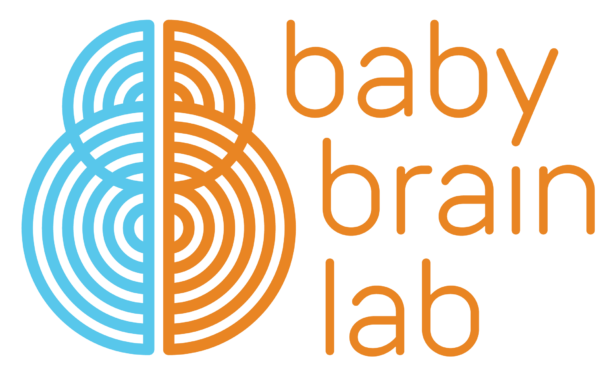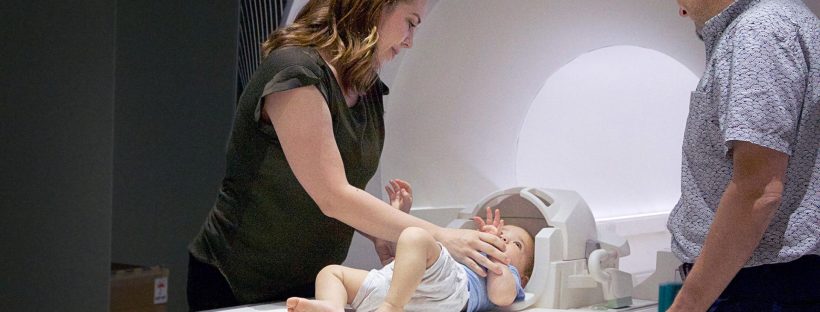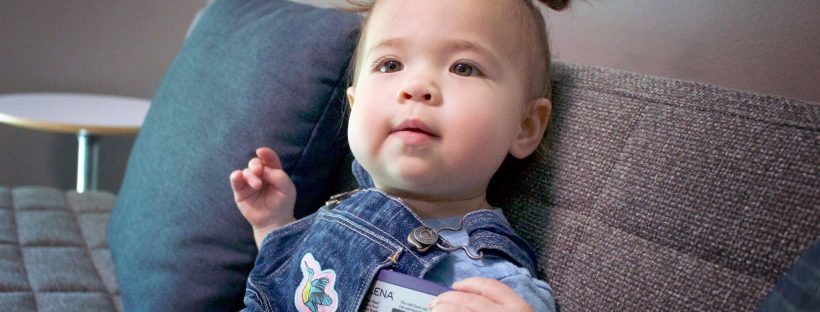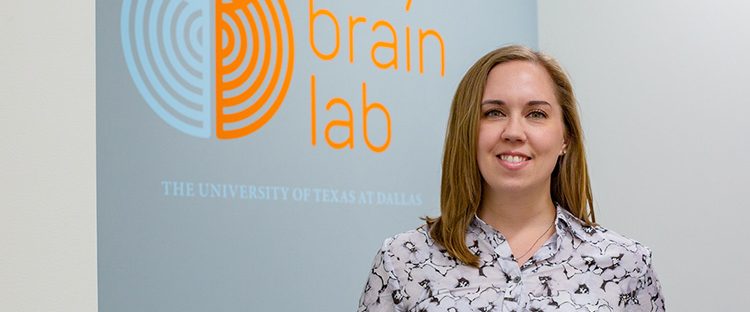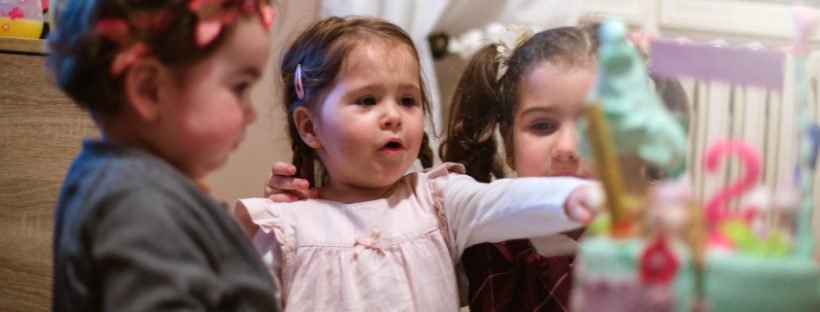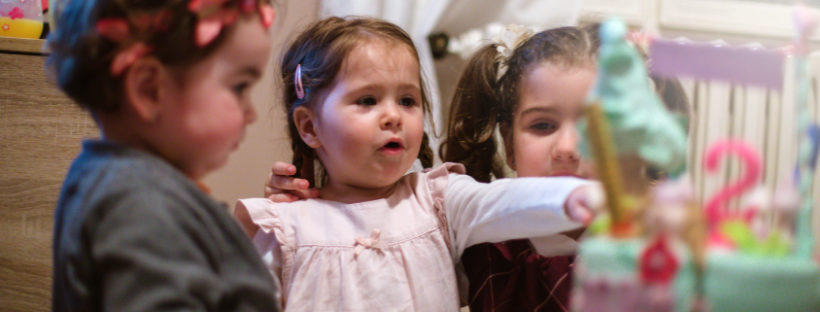New research links baby talk to better language skills for children as they grow. Neurodevelopment and behavioral neuroscientist Dr. Meghan Swanson, who leads UT Dallas’ Baby Brain Lab, joined Good Day to talk about the science.
Researchers Illustrate How Caregiver Speech Shapes Infant Brain
A team led by a University of Texas at Dallas neurodevelopment researcher has uncovered some of the most conclusive evidence yet that parents who talk more to their infants improve their babies’ brain development.
The researchers used MRI and audio recordings to demonstrate that caregiver speech is associated with infant brain development in ways that improve long-term language progress.
UT Dallas Researcher Traces Origins of Infant Speech Development
If you want to know how children first learn to converse, have a word with Dr. Meghan Swanson.
As an assistant professor of psychology at The University of Texas at Dallas, Swanson pushes the boundaries of what we know about how infants begin to communicate. Her work in the School of Behavioral and Brain Sciences focuses on how brain development varies in children who are later diagnosed with autism spectrum disorder.
Structural brain changes foretell language skills in autistic infants
Autistic children younger than 2 years have brain structure differences that predict atypical language development, according to two new imaging studies.
Researchers presented the findings 14 May at the 2022 International Society for Autism Research annual meeting. (Links to abstracts may work only for registered conference attendees.)
Both studies tracked the brain and language development of ‘baby sibs’ — younger siblings of autistic children, who have an increased likelihood of being diagnosed with autism themselves.
Autism Study Stresses Importance of Communicating with Infants
A new language-skills study by Dr. Meghan Swanson suggests that all children can benefit from exposure to more speech from their caregivers.
Dr. Meghan Swanson, assistant professor at The University of Texas at Dallas, is the corresponding author of the study, published online June 28 in Autism Research. It is the first to extend research about the relationship between caregiver speech and infant language development from typically developing children to those with autism. The findings could inform guidelines for earlier action in cases of developmental difficulties.
Early exposure to speech may shape autistic children’s language ability
The more words autistic children hear as infants — and the more verbal interactions they have with their caregivers — the better their language skills at age 2, a new study suggests1.
The quantity of speech young children hear in the home is known to have a strong influence on language development and in turn, on reading skills and ‘school readiness’2.
The new study is the first to look at this association in autistic children under 1 year old. Its findings suggest that coaching parents who have one autistic child to talk to their later babies could be beneficial, says lead investigator Meghan Swanson, assistant professor of psychology at the University of Texas at Dallas.
Fragile X Imaging Study Reveals Differences in Infant Brains
CHAPEL HILL, NC – For the first time, UNC School of Medicine researchers have used MRIs to show that babies with the neurodevelopmental condition fragile X syndrome had less-developed white matter compared to infants that did not develop the condition. Imaging various sections of white matter from different angles can help researchers focus on the underlying brain circuitry important for proper neuron communication.
The study, published in JAMA Psychiatry, shows that there are brain differences related to the neurodevelopmental disorder established well before a diagnosis is typically made at age three or later.
Brain, behavior distinguish autism from language delay
Babies with autism show behavioral and brain features that differ from those of babies with language delay1. These findings from a new study hint at different biological origins for autism and language delay.
The results, based partly on brain scans, could help clinicians identify and treat subgroups of children with language problems.
“The diagnoses we use in clinical practice today are entirely based on behavioral observations and lack any grounding in the underlying biology,” says lead investigator Joseph Piven, professor of psychiatry at the University of North Carolina at Chapel Hill.
Autism Awareness Month: Genes and Development in Autism Spectrum Disorder
Understanding how the brain develops and functions remains among the most difficult of scientific challenges, as is the effort to understand the causes of conditions that alter its function. Among these is autism spectrum disorder (ASD). ASD is described as a spectrum because of the considerable variation in how individuals manifest both symptoms and severity. The core symptoms of ASD, including difficulty in social communication and restricted, often repetitive behaviors, are present in all those affected, but otherwise, there is wide variability in ASD. At the more severe end of the spectrum are individuals who need services as a result of co-occurring intellectual disability or minimal verbal ability, for example. At the other end are individuals with average or superior intellectual ability who can achieve considerable professional and personal success. And in between are the majority of children and adults living with a combination of social, intellectual, and behavioral challenges they and their families face on a daily basis.
Identifying the causes of ASD has proven to be a significant challenge. And while there are several available behavioral treatments that can benefit many if not all of those diagnosed with ASD, much remains to be done in terms of both making helpful treatments more widely available and discovering novel therapies that have the potential to dramatically enhance quality of life. In honor of Autism Awareness Month, I am writing two Director’s Messages about ASD in April. The first, below, explains what we know so far about what causes ASD, and what NIMH researchers are doing to clarify how these causes lead to symptoms. The second, to follow in a few weeks, will discuss currently available therapies for ASD, and NIMH research aimed at learning how to improve access to these therapies.
